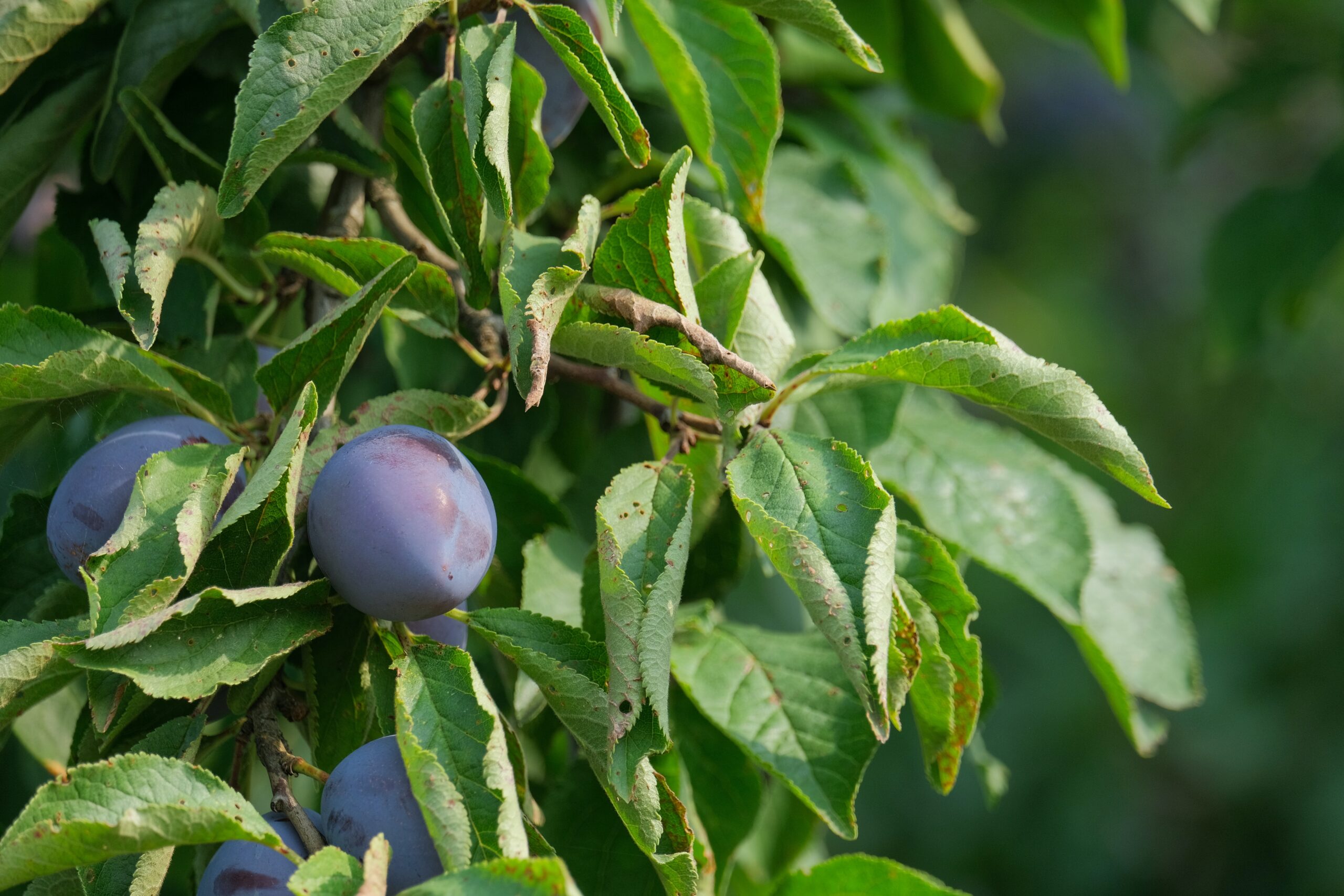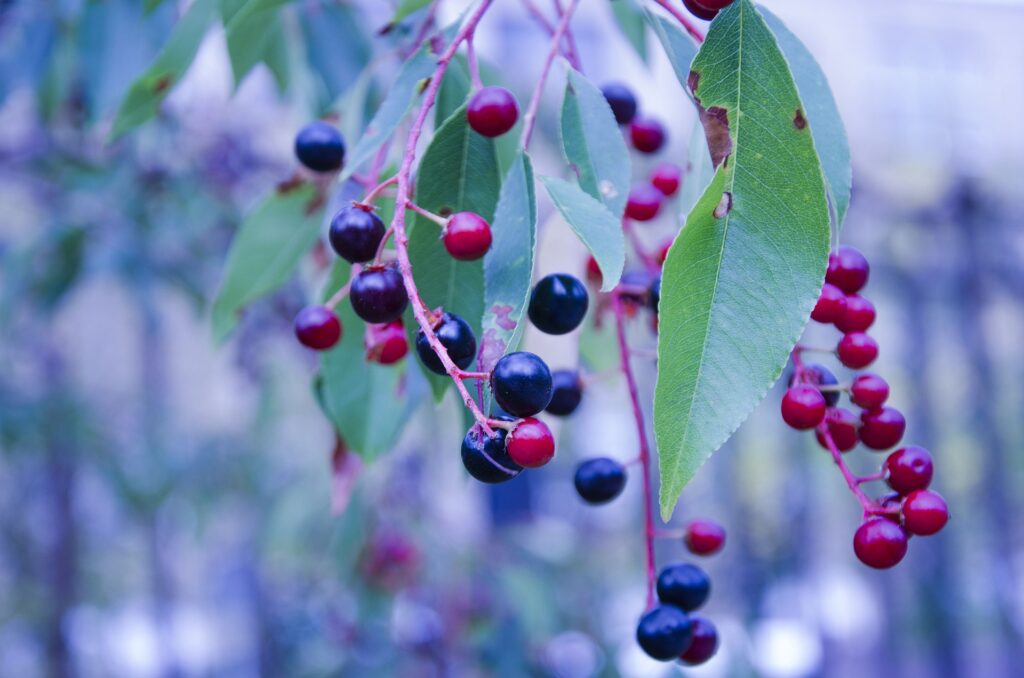Now… you may be familiar with typical fruits such as apples and oranges. When we think of the color of fruits we tend to associate them with bright colors such as orange and yellow that seem to be more appealing to the eye.
However, we rarely think of blue fruits. But why?
Blue fruits from all around the world stand to be rich sources of vitamins and minerals and often contain a high level of antioxidants which naturally contain polyphenols that provide exceptional health benefits. So, why do we not associate fruit with being blue?
To switch up the fruit game, we’ll share a list of amazing and unique blue fruits from all over the world that you may or may not have heard of.
1. Blueberries
Blueberries are one of the most popular blue fruits offering a sweet and juicy taste and texture when they are ripe. These small and delicious berries are packed full of nutrients.

Considered a superfood, blueberries are commonly eaten as a snack or an addition to breakfasts and smoothies as a source of fiber and micronutrients. Studies have shown that the properties of blueberries may provide health benefits that work to improve brain and heart health.
2. Blackberries
Blackberries are deliciously sweet and popular amongst both humans and birds. These are commonly eaten as a snack and added to baked goods.

This blue fruit is said to provide great health benefits as it is rich in vitamin K and K and high in fiber and magnesium.
RELATED: Juicy Secrets: A Guide To Growing Strawberries In Pots
3. Elderberries
Elderberries have long been used around the world as a fruit for making natural remedies for treating symptoms of cold and flu.

Not only does this fruit contain beneficial properties of a high content of vitamins and minerals, but it is also commonly used to make beverages such as gin.
Unlike blackberries, elderberries can’t be consumed raw as this may cause an upset stomach. Instead, they are best enjoyed cooked or added to baked goods and beverages.
4. Blackcurrants
Though their name suggests that they’re black, blackcurrants exhibit dark-blue hues. This fruit embodies a rich and distinct scent and flavor.

It is a popular fruit all over the world that is widely cultivated as an ingredient that is used for making jams and juices. Blackcurrants can also be eaten fresh as they offer a strong and tangy flavor.
They can also be dried and consumed as a snack or as an ingredient for baked goods. Blackcurrants are rich in antioxidants and are a great source of vitamin C.
5. Damson Plum
Damson plums are a uniquely sweet and succulent plum variety. This fruit is commonly used for making jams, jellies, and desserts.

Damson plums consist of a rich blue color. They are recognized for being extremely fibrous and are a great fruit for treating digestive problems and constipation. When dried these plums make prunes which are considered a popular natural remedy around the world.
6. Blue Tomato
There is a common misconception that tomatoes are vegetables, however, they are in fact a fruit. Blue tomatoes consist of a unique dark-blue shade which is caused by the tomato’s rich level of anthocyanins which give it its blue hue.

Also known as Indigo Rose tomatoes, blue tomatoes consist of a sweet and tangy flavor that is common for culinary purposes. This fruit is high in antioxidants and makes a great addition to any salad.
7. Concord Grapes
Concord grapes are a delicious variety of grapes that are famous for their sweetness and juiciness. This grapes are widely popular and commonly used for a variety of purposes including making wine, jams, and juices.

These juicy grapes consist of a mesmerizing dark-blue hue and they contain a high level of antioxidants. Rich in antioxidants, concord grapes holds great immune-boosting effects.
8. Blue Marble Fruit
Blue Marble Fruit or Blue Quandong is a unique fruit that consists of a vibrant aqua blue color. These eye-catching fruits originate from eastern Australia.

Though their color looks alarmingly bright and somewhat poisonous… this fruit is in fact edible. The fruit contains green pulp which is the edible part, however, isn’t too appetizing as it has a strong, sharp flavor.
The blue marble tree is most common as an ornamental plant as a result of its awesome color. Though bitter, its fruit is in use for culinary purposes for making an edible paste.
9. Jamun
Jamun is a unique oblong-shape fruit that originates from the Indian subcontinent and other countries in Asia.

This fruit, when ripe, offers high nutritional value and is common for its antioxidant properties. Jamun fruit is commonly in use for medicinal purposes as ayurvedic medicine for treating ailments and illnesses such as cold and flu.
10. Sloe Plums
Sloe plums are fruits that come from blackthorn trees. These plums, though juicy, are too sharp and acidic to eat fresh.

However, they are frequently in use for making gin, salsas, and jams as their flavor adds a distinctive flavor.
Sloe plums are native to Europe, western Asia, and areas of northern Africa.
11. Blue Tomatillos
Blue Tomatillos are a rare fruit. These fruits consist of a deep blue-purple color. Roughly the shape and size of a golf ball, these unique fruits are enveloped in a thin wafer husk that turns from green to brown when the fruit inside is ripe.

The blue tomatillo offers a sweet and tangy flavor with an acidy hint of citrus and a sweetness of plum and pear. The fruit contains rich antioxidant compounds. It is a fruit that is a staple in Mexico and is common as an ingredient for making salsa.
12. Honeyberries
Honeyberries are fruits form of the honeysuckle flower due to their sweet flavor and floral scent. Also commonly called the blue honeysuckle, honeyberries are native to countries in the northern hemisphere including Canada, Japan, and Russia.

This fruit offers a deliciously sweet and unique flavor that is to embody hints of cherry, kiwi, and even blackberries. This delicious fruit melts in your mouth with a soft velvety skin and juicy center. Besides tasting great, this fruit is also high in nutritional value.
13. Saskatoon Berries
Scientifically known as Amelanchier alnifolia, saskatoon berries bear resemblance to the widely recognized blueberry. They are also called juneberries and prairie berries.

Saskatoon berries are close relatives of the apple family and they offer a unique sweet and nutty flavor. Like an apple, this fruit ripens after it has been picked and makes for a great snack.
Saskatoon berries are native to North America and are highly nutritious and packed with antioxidants.
14. Huckleberries
Though you may have heard of Huckleberries in reference to literature… Have you ever wondered about the huckleberry fruit? Huckleberries bear resemblance to blueberries but they contain larger seeds than a blueberry.

Huckleberries also consist of a sharper and tangier flavor than blueberries. It is rich in vitamin C and antioxidants and are to contain beneficial properties when it comes to improving the immune system.
Huckleberries are also common for making natural remedies as they are to hold properties that work to boost collagen production and therefore improve aging skin.
RELATED: 11 Tasty Raspberry Plants (With Pictures And Bonus Berries)
15. Juniper Berries
Scientifically known as Juniperus communis, juniper berries are native to several areas of the world including Europe, Asia, and North America. This widely recognized fruit is commonly famous for its unique oaky and spicy scent.

Though edible, juniper berries consist of a tart, earthy flavor that makes them an ideal ingredient for using as a spice.
Juniper berries aren’t just for culinary purposes, they are also for medicinal purposes as they contain high nutritional value and antioxidant properties that people believe to provide health benefits.
16. Blue Olives
Blue olives are native to Sri Lanka and are classified as a variety of Ceylon olive. This unique olive consists of a thin and edible skin and a green center.

The tropical blue olive offers a slightly sweet and sour flavor when it is ripe and has an avocado-like texture. It is a fruit that is commonly in use for culinary purposes either to be eaten fresh or to be in use as an ingredient to make salad dressings and pickles.
17. Filius Blue Pepper
The filius blue pepper is commonly in use as an ornamental pepper as well as being in use for culinary purposes. This fruit starts with a deep blue-purple hue before turning red when ripe. Once ripe, the blue pepper loses its heat.

Final Thoughts
From berries to plums and peppers, the variety of blue fruits is endless. Who knew that there were so many blue fruits out there…
Finally, with the types of fruits presented, you can now begin to explore new and exciting flavors. Why not use one of these fruits as an ingredient to wow your friends at a dinner party or to spruce up your garden?
We hope you learned something from this article, here are other articles that you can learn from:
How To Protect Your Strawberries From Slugs? A Comprehensive Guide
What Is Eating My Strawberries? The Culprits & How To Control Them!







